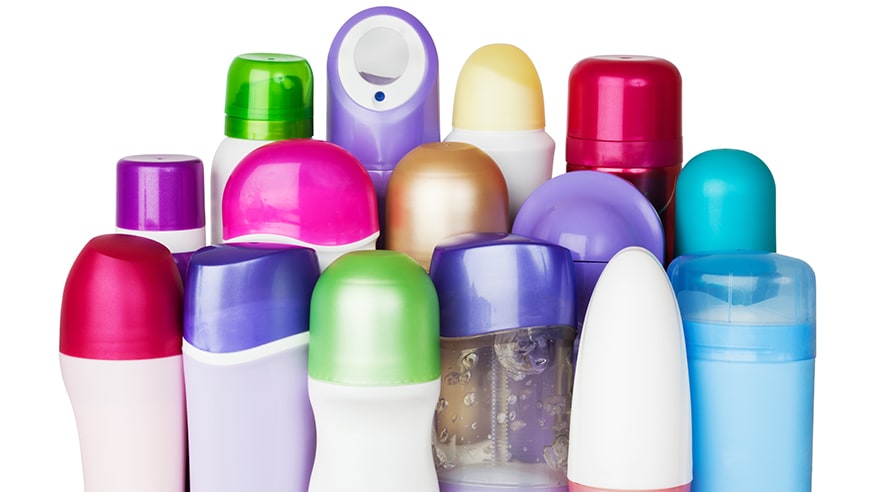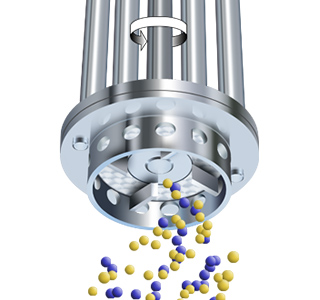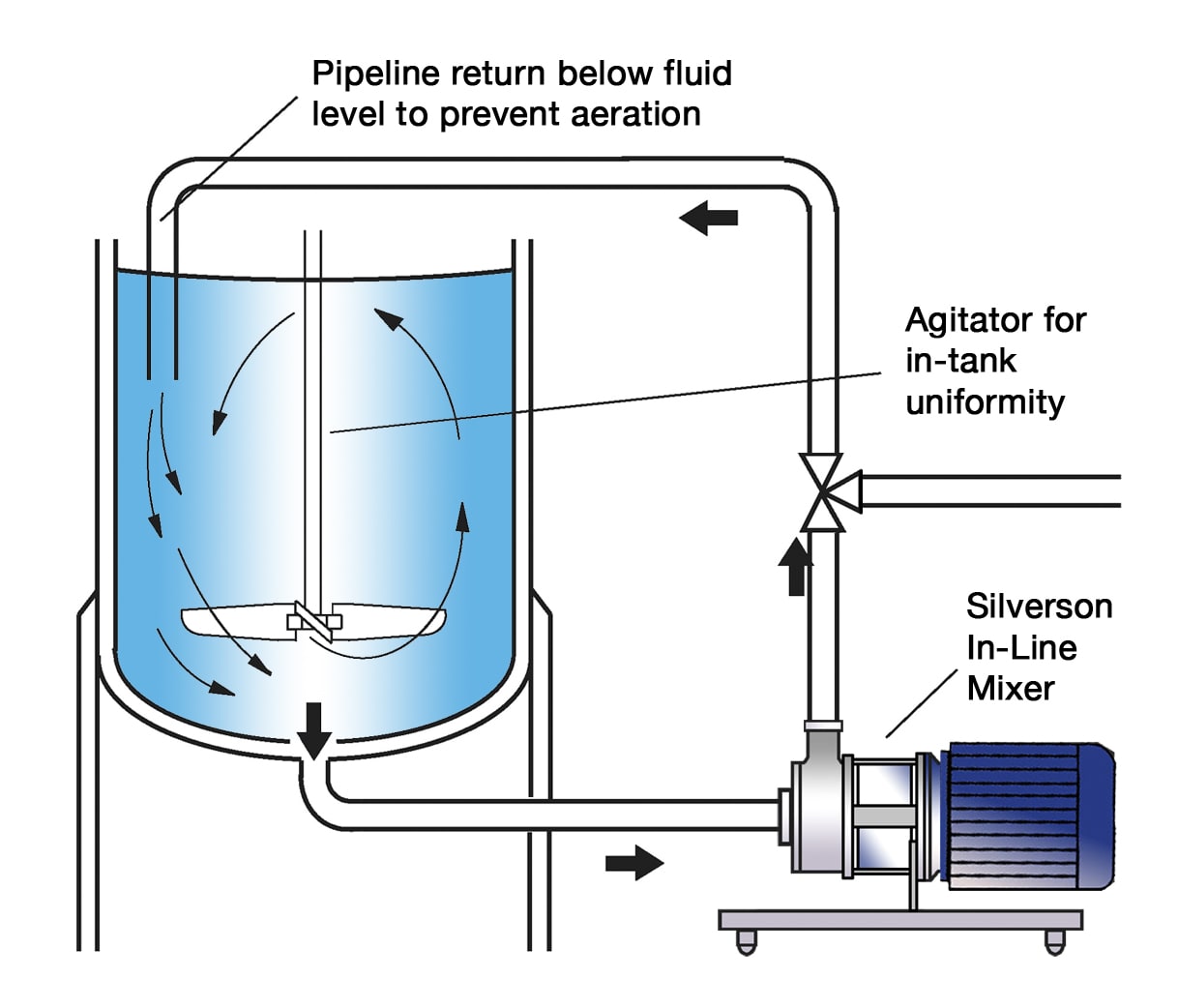Manufacture of Deodorant and Antiperspirant
A deodorant stops odour by killing skin bacteria with biocides and masking odour through fragrance. An antiperspirant reduces the amount of available water on the skin with astringents, most commonly aluminum salts. Both types of product are generally water in oil or water in silicone emulsions, containing active ingredients (biocides or aluminium salts), emulsifiers, gelling, suspending or thickening agents, waxes, emollients, preservatives, colourants and fragrance.

The Process
The formulation and ingredients vary according to whether the product is to be supplied in aerosol, roll-on, gel or stick form, however to some extent the basic manufacturing process is the same:
- The vessel is charged with solvents such as alcohol, propylene glycol, glycerine, etc. or silicones such as dimethicone. This is the oil or “continuous phase.”
- Flake/powder ingredients, such as cetyl alcohol are dispersed into the oil phase.
- The “dispersed phase” is prepared separately. Typically this is aqueous, however stick deodorants usually do not contain water; the dispersed phase would also be oil based.
- The active ingredient is dispersed into this phase. Suspending agents such as bentonite may be added.
- The phases are combined to form an emulsion.
- The active ingredient is sometimes added at this later stage.
- Gelling agents or polymers are added to stick products to form structure.
- Fragrance and colouring are added.
- The product is cooled and poured into containers, moulds, etc.
The Problem
- Some ingredients can form agglomerates which conventional agitators cannot easily break down.
- Some ingredients require shear in order to develop their desired properties.
- Aeration must be minimised.
- When adding powdered ingredients to the vessel partially hydrated materials can build up on the vessel wall and parts of the agitator.
- Some gelling agents are prone to degradation at high temperature or low pH.
- Conventional agitators cannot easily form stable emulsions even when both liquid phases have been heated.
- Long process times and additional equipment are often required to achieve a homogeneous product.
The Solution
The advantages of the Silverson High Shear mixer stem from the 3 stage mixing/shearing action generated by the precision machined workhead. Operation is as follows:

Stage 1
The vessel is charged with appropriate base fluid. The mixer is started, and the solid/powdered ingredients are added. The powerful suction created by the high speed rotation of the rotor draws liquid and solids into the workhead where they are rapidly mixed.

Stage 2
The solids are de-agglomerated in the precision machined workhead before being forced out through the stator and circulated back into the mix. Simultaneously fresh material is drawn into the workhead.

Stage 3
Once the powdered ingredients have been fully dispersed in the “continuous” liquid phase, the “dispersed” phase is added. The high shear mixing action of the workhead forms a uniform and stable emulsion.
-
Stage 1

Stage 1
The vessel is charged with appropriate base fluid. The mixer is started, and the solid/powdered ingredients are added. The powerful suction created by the high speed rotation of the rotor draws liquid and solids into the workhead where they are rapidly mixed.
-
Stage 2

Stage 2
The solids are de-agglomerated in the precision machined workhead before being forced out through the stator and circulated back into the mix. Simultaneously fresh material is drawn into the workhead.
-
Stage 3

Stage 3
Once the powdered ingredients have been fully dispersed in the “continuous” liquid phase, the “dispersed” phase is added. The high shear mixing action of the workhead forms a uniform and stable emulsion.
The Advantages
- Agglomerate-free mix.
- Maximised yield of raw materials as thickening agents are fully hydrated and active ingredients fully dispersed.
- Rapid mixing time.
- Stable emulsion.
- In many cases heating is not required, reducing costs and risk of degradation of heat sensitive ingredients.
- Reduced aeration.
- Consistent product quality and repeatability.
Intermediate stages of production can be eliminated, product quality improved and processing times dramatically reduced by using a Silverson High Shear mixer. There are a number of machines in the Silverson product line used for this application, the suitability of which is dictated by individual processing requirements, including batch size, formulation and viscosity of the end product:
High Shear Batch Mixers
- Suitable for batch sizes up to 1000 litres
- Can be used on mobile floor stands
- Sealed units available for pressure/vacuum operation
- Small units available for R&D and pilot production
High Shear In-Line Mixers
- Ideal for larger batches
- Aeration free
- Easily retrofitted to existing process
- Self-pumping
- Can be used to discharge vessel
- Multistage units available
- Ultra Hygienic units available
- High Viscosity models available
Silverson Flashmix
- Ideal for larger batches
- Capable of rapidly incorporating large volumes of powders
- Minimised aeration
- Minimised cleaning requirements
- Suitable for higher viscosity mixes
- Suitable for operation at higher temperatures
- Minimum operator input required
High Shear Bottom Entry Mixers
- Generally used in conjunction with an anchor stirrer/scraper
- Suitable for use on high viscosity products - gels, deodorant sticks or those that increase in viscosity or solidify on cooling



